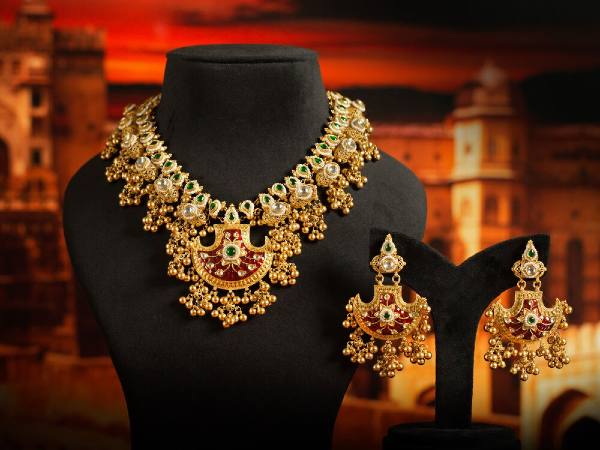When buying jewellery online, don’t go by pictures alone. Ask for a video call or views of the piece from all sides
Call to purchase Diamond Jewellery,”
“Shop jewellery from Home”
“Schedule Video call for Jewellery purchase”
As India celebrates Akshaya Tritiya today, retail outlets from across the country are nudging customers to buy gold and jewellery online. But that’s also mainly because of the COVID-19 lockdowns.
Gold prices have fallen 18-20 percent from their August 2020 peaks. Savvy buyers have used this opportunity to buy more gold. Jewellery demand was 52 percent higher year-on-year, even as bar and coin investments increased 36 percent year-on year, as on April 29, 2021, says World Gold Council.
Moreover, bank branches have stopped selling gold coins as they limit their daily activities to only essential tasks. Small wonder that the road to buying gold and jewellery digitally leads to jewellery outlets that offer this facility. The question is: should you buy jewellery without touching and feeling it? That is something most of us have never really done so far.
Request for inspection
When buying jewellery online, don’t go by pictures alone, even if you know the jeweller well enough. Ask for a video call or view of the piece from all sides.
“Ensure that images aren’t enhanced with special effects or something. At Popley’s, we call it ethical photography. One should request for 360-degree photography of jewellery articles,” suggests Rajiv Popley, Director of Popley Group.
Some jewellers offer a try-at-home service. “For the customers in areas that do not have a lockdown, but are still uncertain of stepping out of their houses, our experts visit them at their homes with their selection of jewellery via a scheduled try-at-home option. In the case of video calling, the customer can also book the jewellery and the store will deliver it at their doorstep once the lockdown is lifted,” says Dipu Mehta, Managing Director, ORRA.
Size differential
Radhika Soni, 47, was looking to gift her sister a pendant and opted for online purchase. “The size of the pendent was way smaller than what I had envisaged. It would suit my daughter, but when an adult wore it, it looked tiny,” she says after her February 2021 purchase.
You should check the dimensions mentioned with the product and take a print, to ensure unwanted shocks. “The size of the product is important, as normally it is enlarged on the screen for better clarity,” says Popley.
Anticipating the jewellery size is an issue for Indian consumers who are so used to testing the product before purchase. Standard sizes too aren’t known to Indians for jewellery, like it is known for other products such as apparel or footwear. “The only categories in which customers face a sizing issue are in rings and bangles,” says Mehta.
Hallmarking and purity
Purchasing only hallmarked jewellery should be a norm when you purchases from unknown brands. Hallmarked jewellery either carries a certificate or has an embossed purity mark on the jewellery piece, which is more authentic than a hallmarked paper certificate.
Under the fire assay purity check of Bureau of Indian Standards (BIS), a small part of jewellery is melted and tested. If 91.6 is embossed on the jewellery, it means that the gold purity is 91.6 percent, which translates to 22-carat gold. Similarly, on gold coins, 1,000 could be embossed, meaning 24 carats, while hallmarking of 750 would be equivalent to 18 carats. In other words the amount of gold per 1,000 points is mentioned on the jewellery.
“In India, gold is sold and bought in many variants ranging from 1 Karat to 24 Karat. Different regions have unique demands for different Karatages. It is common to find 23K and 24K gold items in Akola, Kolhapur, Solapur, Pune and Jalgaon in Maharashtra, while in Haryana, Punjab and Western Uttar Pradesh, they usually sell 20K and 21K,” says Ashish Pethe, Chairman, All India Gem & Jewellery Domestic Council.
Knowing the purity of a particular jewellery piece is essential to determining the price.
Gold Pricing
The purity would determine the price you pay for the gold jewellery on a particular day. So, the cost of 24K gold has been Rs 4572 per gram, but for 22K it was Rs 4,472 per gram on May 12, 2021. This varies with the city of purchase: New Delhi’s rates were at Rs 4990 per gram and Bangalore stores quoted Rs 4856 per gram for 24K.
“A common mistake made is that customers get enamoured with cheaper options without checking what the purity of the gold used in the jewellery is, especially in diamond jewellery. So you should know if you are buying diamonds set in 18K or 14K gold,” says Mehta.
Return and buy-back
Check if your jeweller has a return and buy-back policy. This is critical if you buy expensive gold or jewellery items, especially online. Chances of being misled when buying studded jewellery are higher, as the weight can be camouflaged in the weight of stones. During online purchases, you may not be able to ascertain the gold weight and the weight of stones separately. Also, intricate pieces that entail studded gems also have high making charges, which could be as much as 25 percent of the total cost.
“Check for any hidden charges or clauses while shopping online. Do not depend on portals that do not stock the goods as you will not know how the jewellery would turn out to be, once ordered,” recommends Popley.
Most websites suggest that the information on any damage should be communicated within 48 hours of delivery. So, immediately upon receipt, open the packet and ensure everything is in order. It is better to request the company for reverse shipment of such items instead of you selecting a courier service.Finally, save your invoice. It doubles up as a record of gold purity. If there is doubt on the purity of gold, the retailer cannot contest the case after you produce an invoice.





































